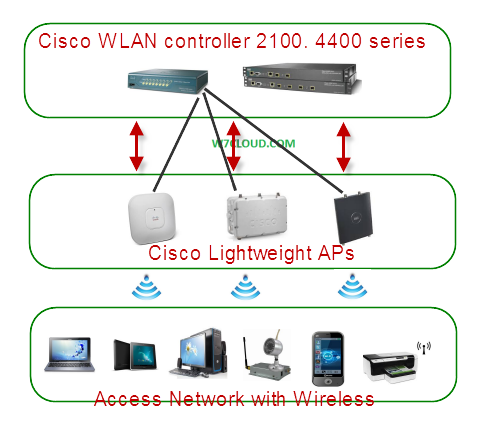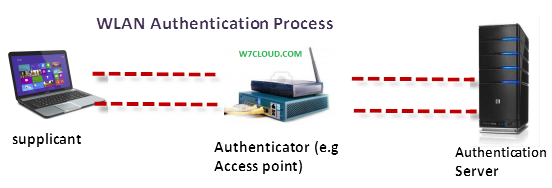
As a CCDA candidate we must aware with the IPv4 to Ipv6 transitions, using these transition methods you can design your IPv6 network or you can run both IPv4 and IPv6 in your network. Following are the Models are used for IPv4 to IPv6 transition. Each model provides several advantages and is advantages, the dual-stack model is recommended because it requires no tunneling and is easier to manage
IPv6 using Dual stack backbone:
In this particular method we have the ISP with the ipv4 and IPv6 packets in backbone. In this model you can route both types of packets like IPv4 and IPv6. This is a good model for organization having the mix environments of IPV4 and IPv6 applications. The disadvantage of this model is that you need to have the routers with dual addresses which consume addition memory and MTU. Also IPv4 and Ipv6 only address can be communicate directly. When using dual stacks, a host also uses DNS to determine which stack to use to reach a destination. If DNS returns an IPv6 (AAAA record) address to the host, the host uses the IPv6 stack. If DNS returns an IPv4 (A record) address to the host, the host uses the IPv4 stack.
IPv6 over dedicate WAN Links:
This model is used for deploying the new network with IPv6, in such type of design we have the all IPv6 tunnels for connecting the remote office sites. In such design all nodes and devices are assigned with IPv6 address.
IPv6 over IPv4 tunnels:
In this type of network we have the packet of IPv6 only network, and have IPv4 tunnels. With tunneling you can encapsulate the IPv6 packets with IPv4 tunnels. You can transmit your data to remote office without having the main physical circuits, you do not need separate circuits to connect the IPv6 networks with tunneling, and IPv6 traffic is encapsulated within IPv4 packets so that they are sent over the IPv4 WAN. This method increased the protocol overhead of encapsulated IPv6 headers and these tunnels are created manually or automatically.
For static configuration of tunnels, the tunnels are configured with IPv4 and IPv6 addresses for tunnel source and destination. Tunnels can be built between end devices or between routers and hosts. In semiautomatic configured tunnels, a tunnel broker is used. The tunnel broker is a server on the IPv4 network that receives requests from dual-stack clients and builds a tunnel on the tunnel router and associates it with the client.
Automatic tunnel mechanisms are
- IPv4 compatible tunnels
- 6to4 tunnels
- 6over4 tunnels
- ISATAP tunnels
IPv4 compatible tunnels:
These tunnels are compatible with IPv4 and use the IPv4-compatible addresses. This mechanism does not scale, and IP-compatible addresses have been deprecated, so this mechanism is appropriate only for testing.
6to4 tunnels:
6 to 4 tunnel method is for transition by assigning an interim unique IPv6 prefix. 2002::/16 is the assigned range for 6to4. Each 6to4 site uses a /48 prefix that is concatenated with 2002. The border router extracts the IPv4 address that is embedded in forwards it to the IPv6 destination.
6over4 tunnels:
6 over 4 is another tunnel method that requires an IPv4 multicast-enabled network. IPv6 multicast packets get encapsulated into IPv4 multicast packets to communicate with other 6over4 hosts. 6over4 is of limited practical use.
ISATAP tunnels:
Intra-Site Automatic Tunnel Addressing Protocol (ISATAP) is another method to tunnel IPv6 over IPv4. With ISATAP, a tunnel is created between dual-stack hosts or routers to transmit IPv6 packets over an IPv4 network. Unlike 6over4 mechanism, ISATAP does not require the IPv4 to be multicast enabled. With ISATAP the link-local address is generated by concatenating FE80:0000:0000:0000:0000:5EFE: with the IPv4 address expressed in hexadecimal. For example, with IPv4 192.168.10.10 the link-local address is
FE80:0000:0000:0000:0000:5EFE: C0A8:0A0A.
Protocol translation( NAT PT):
Protocol translation is also known as the NAT PT. Nat-PT provides the translations from IPv4 and IPv6.
Some techniques are
Application layer gateways (ALG): These use dual stacks and allow one host on the IPv4 domain to communicate with the host on the IPv6 domain.
Application programming interfaces (API): An API module intercepts IP traffic through an API and coverts it for the IPv6 counterpart.













